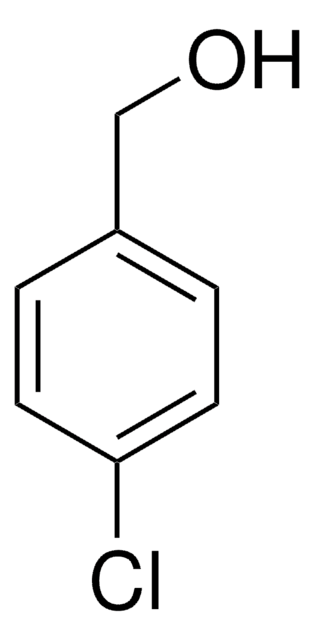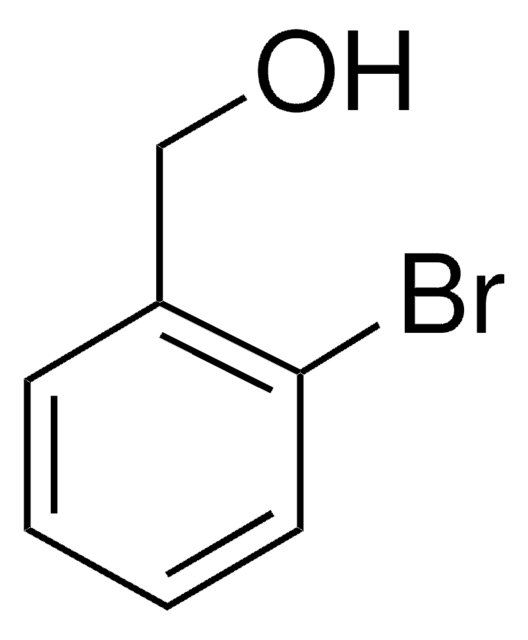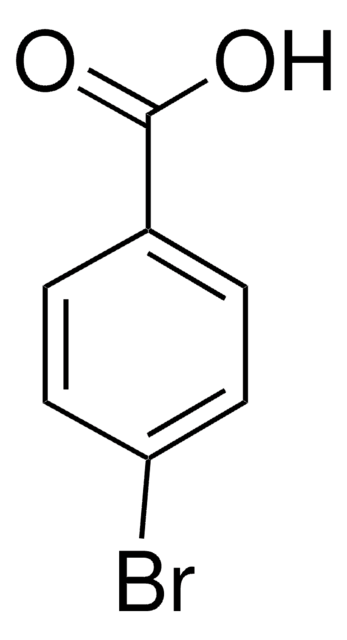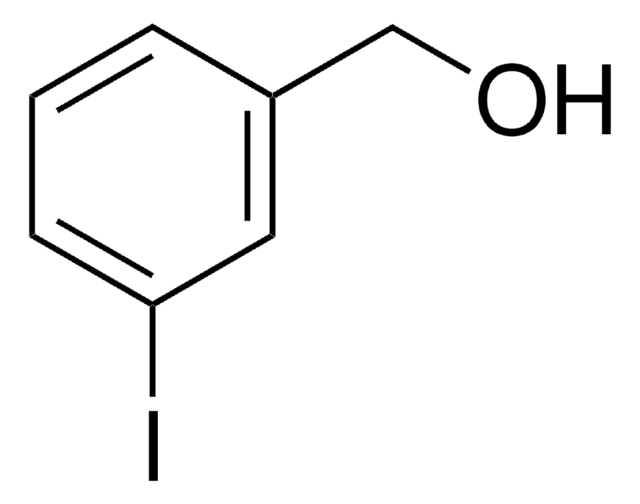187054
4-Bromobenzyl alcohol
99%
Sinonimo/i:
(4-Bromophenyl)methanol, (p-Bromophenyl)methanol, 1-(p-Bromophenyl)methanol, 1-Bromo-4-(hydroxymethyl)benzene, 4-Hydroxymethyl-1-bromobenzene, p-Bromobenzyl alcohol
About This Item
Prodotti consigliati
Livello qualitativo
Saggio
99%
Stato
solid
Punto di fusione
75-77 °C (lit.)
Solubilità
dioxane: soluble 1 g/10 mL, clear to faintly turbid, colorless to faintly yellow
Gruppo funzionale
bromo
hydroxyl
Stringa SMILE
OCc1ccc(Br)cc1
InChI
1S/C7H7BrO/c8-7-3-1-6(5-9)2-4-7/h1-4,9H,5H2
VEDDBHYQWFOITD-UHFFFAOYSA-N
Informazioni sul gene
human ... ALOX12(239) , ALOX15(246)
Cerchi prodotti simili? Visita Guida al confronto tra prodotti
Descrizione generale
Applicazioni
- hydroxyl end functionalized, substituted polyfluorene
- amphiphilic, symmetric rod-coil, triblock copolymer of poly(9,9-didodecylfluorene-2,7-diyl) and poly(hydroxyl ethyl methacrylate)
Indicazioni di pericolo
Consigli di prudenza
Classi di pericolo
Aquatic Chronic 3
Codice della classe di stoccaggio
13 - Non Combustible Solids
Classe di pericolosità dell'acqua (WGK)
WGK 3
Punto d’infiammabilità (°F)
Not applicable
Punto d’infiammabilità (°C)
Not applicable
Dispositivi di protezione individuale
Eyeshields, Gloves, type N95 (US)
Scegli una delle versioni più recenti:
Possiedi già questo prodotto?
I documenti relativi ai prodotti acquistati recentemente sono disponibili nell’Archivio dei documenti.
I clienti hanno visto anche
Il team dei nostri ricercatori vanta grande esperienza in tutte le aree della ricerca quali Life Science, scienza dei materiali, sintesi chimica, cromatografia, discipline analitiche, ecc..
Contatta l'Assistenza Tecnica.








